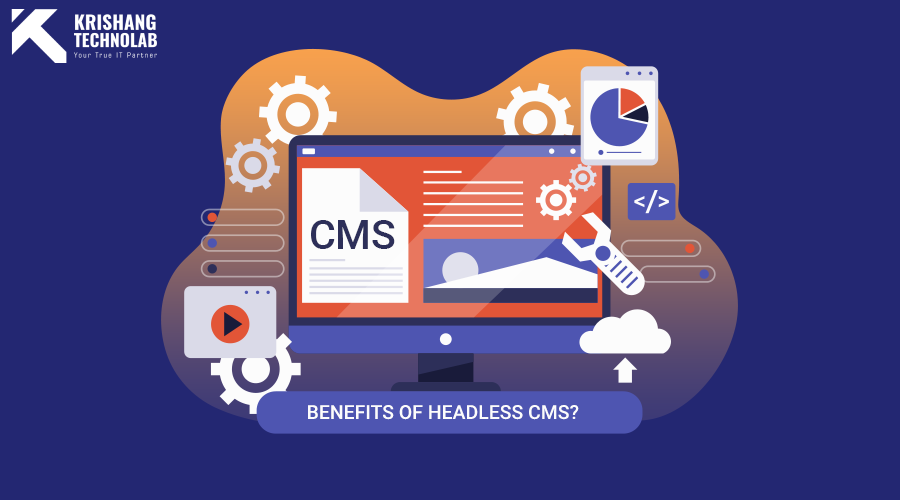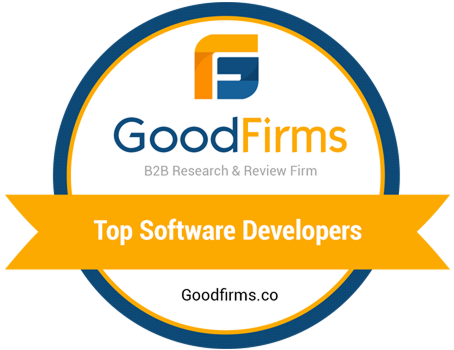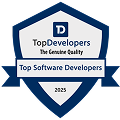Quick Overview: In this blog, we explore the concept of headless CMS, a modern approach to content management that separates the backend content repository from the frontend presentation layer. You’ll learn about the core features, benefits, types, and top platforms for headless CMS, as well as why businesses and developers are increasingly adopting it for scalable, flexible, and future-proof web solutions.
The term ‘headless CMS’ has been catching a lot of attention lately and why not? Many people and businesses developers already know about headless CMS, but some might find this term confusing yet amusing. Well, if you fall in the latter category, don’t worry at all. Since you are here now, you will get to know and understand the basics of headless CMS, headless CMS benefits, headless CMS types, and much more.
First of all, you must know that the headless content management system is a rising trend, and it’s becoming more popular every day. Before we begin discussing the headless CMS benefits, it’s important to first understand what headless content management is and what it does. So, we will begin a quick, and scrip overview of the headless content management system and then move ahead step-by-step. . Let’s get into it.
What is a headless CMS?
To put it simply, headless CMS is a content management system with a little twist. So, headless CMS manages and organizes content without a connected frontend or display layer. A headless CMS is where all your content and assets live. Content stored in a headless content management system is delivered via APIs for seamless display across multiple devices.
Moreover, a headless content management system is a backend CMS only. The head of the system, which is the presentation layer, is separated from the body. Thus, when the body is separated or cut off, the CMS becomes headless and called headless CMS. Yes, now you know why this CMS is named like that; interesting, isn’t it?
What makes headless cms different from traditional cms?
In a traditional CMS approach, the frontend and backend are coupled together, and other elements like content, images, HTML, and CSS are put together in one bucket. Thus, it makes it impossible to reuse the content in traditional CMS.
Although traditional CMS was doing fine, the need for a more flexible CMS evolved over time. Enterprises also started developing websites, mobile sites, apps, and digital solutions; traditional CMS failed to keep up with it all. Hence, the need for a more flexible CMS found a home in the headless content management system. The headless content management system solved the limitations of a traditional CMS by structuring the content so that it could be reused across different platforms and channels.
Let’s quickly go through this chart representing the significant differences between headless CMS and traditional CMS based on common grounds.
Headless cms vs traditional cms- a Quick Comparison

What are the best benefits of a headless content management system?
After understanding the headless content management systems and how it’s different from traditional CMS, we will throw light upon the Benefits of headless architecture in length. So, let us get started!
Omnichannel architecture
A CMS was built with CMS websites in mind initially, but as new technology like IoT, smart devices, and smartwatches gained prominence, the traditional CMS couldn’t keep up with the modern customer experience. And that’s how headless CMS came to the rescue with an omnichannel architecture.
Headless CMS provides the ability to provide a seamless customer experience that spans all the touchpoints and maintains consistency. Thus, a headless content management system removes the barriers faced by traditional CMS by fulfilling the modern customers’ needs by accessing the information on multiple channels.
Flexibility in CMS solution
Headless CMS decouples the presentation and content and provides the best of both worlds- a traditional CMS and headless architecture in one platform. Although a fully headless content management system pushes the content to any presentation layer, it could be difficult to grasp for non-technical marketers who are not used to its functionality.
Moreover, hybrid CMS like Liferay DXP comes with pre-built frontend tools that use APIs to connect with the backend systems. Thus, a headless content management system provides more freedom to choose the CMS the marketers are most compatible with.
Headless CMS costs less
We know many will consider this as the biggest benefit of headless CMS, and rightly so. Since a headless content management system requires little technical involvement, creating a new headless content management system functionality is quicker and time-saving.
With headless CMS, the upfront costs are also reduced as you can begin with creating smaller solutions and then invest in the big one. Thus, with the headless content management system, it is best to start small and scale up as needed, and that saves a big sum of money.
Future Proof
As the presentation and data layer is separated in a headless content management system, it becomes possible to structure the content and create new websites and functionality in the existing websites and use APIs to bring all the elements together.
Besides, headless CMS is compatible with any framework, and therefore, a headless content management system adapts to the changes real quick in case there is a need to make changes in the development. These functions of headless CMS make it future proof which is also one of the top benefits of the headless content management system.
Easily scalable
In the headless content management system, the front end and back end layers are separated, and therefore, resolving any issue becomes simpler and quicker. Moreover, if there is any maintenance requirement, the website doesn’t face any performance issues at all.
headless content management systems manage the content from a single point and enable changing the developer’s tool and framework anytime, without any hassle. Furthermore, the hosting options are also infinite in the headless content management system, which eventually results in quick scaling.
Great software architecture
A headless content management system is a great choice for achieving and creating an environment with the topmost level of integrity and security. Many businesses prefer headless CMS for eCommerce websites and apps as they allow them to produce a better software architecture from scratch.
Unlike traditional CMS, headless CMS architecture helps in managing the time and resources utilized to develop successful software. Lastly, headless content management systems deliver a better customer experience with fewer resources and time.
Let’s Talk a Little About the Pros and Cons of Headless CMS
Just like any other CMS, headless CMS architecture also has its share of pros and cons. We will first begin with all that’s good with headless CMS. So, let’s first focus on the pros of headless content management systems.
What are the pros of headless CMS?
- Omnichannel experience
- Flexibility
- Scalability
- Easy design
- Time-efficient
Now, let’s see what the cons of headless CMS are
- No content previews
- Dependency on developers
- Maintenance can be expensive at times
Headless CMS architecture sure has its downside, but its benefits overpower its limitations, and therefore, we can say that the headless content management system is here to stay, and the benefits of open-source headless CMS will influence businesses big time.
Which are the best headless web content management systems out there?
Since headless content management systems are getting all the attention, let us look at some of the best headless CMS web content management systems platforms out there. So, here we go!
- Sanity
- Magnolia
- Contentful
- Agility CMS
- Butter CMS
- Superdesk
- Kentico Kontent
- Directus
- Bold
- DotCMS
- Ghost
- Butter CMS
- Bloomreach
- Netlify
So, What Do You Think of the Future of Headless Cms?
With more and more brands wanting to publish their content on multiple devices and with the increasing use of IoT and smart devices, the traditional CMS is becoming incompatible. That’s the reason headless content management systems are growing rapidly. The best headless content management systems are a great response to the way users consume content over the internet. Breaking away from the old ways of serving content via web pages, headless content management systems enabled having content on multiple interfaces.
Looking at the present success of eCommerce, we can say that headless web content management systems have pretty big things in stock in the future. After going through the headless content management system benefits and types, let us know what you think of this content management system and ask us if you have any more questions.
Lastly, if you want headless content management systems for your business, reach out to Krishang Technolab and know everything about it.






